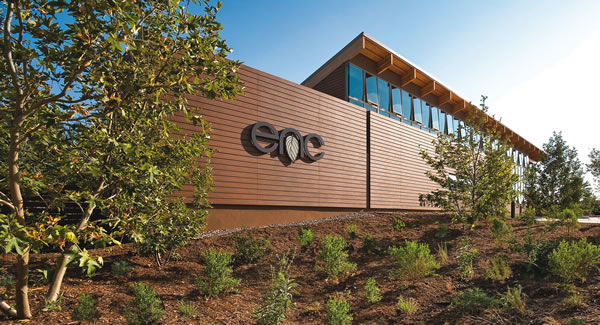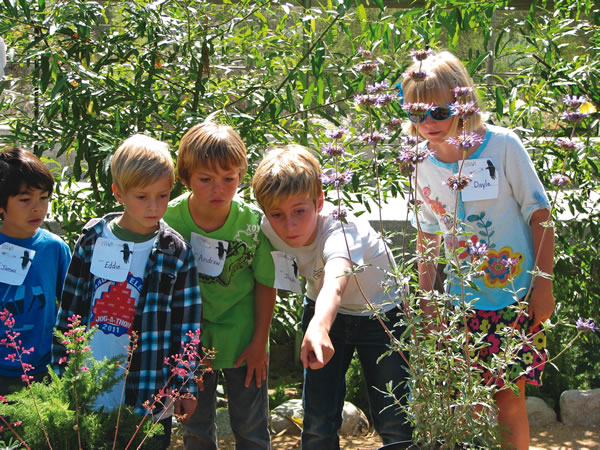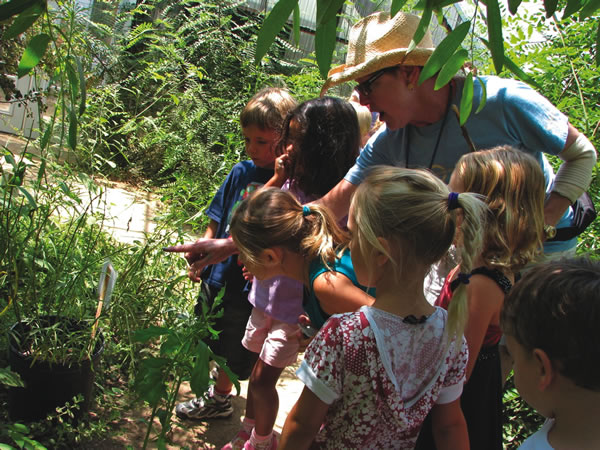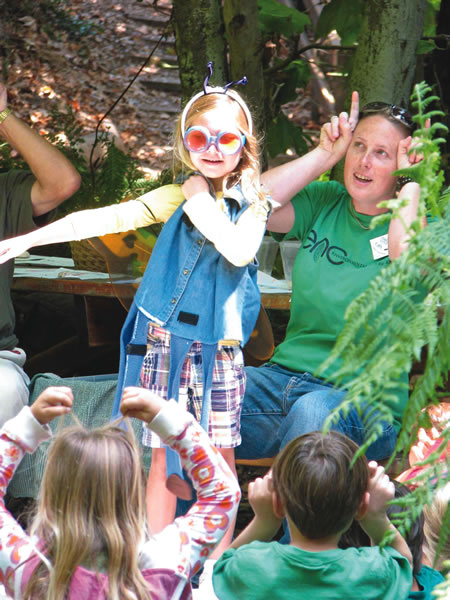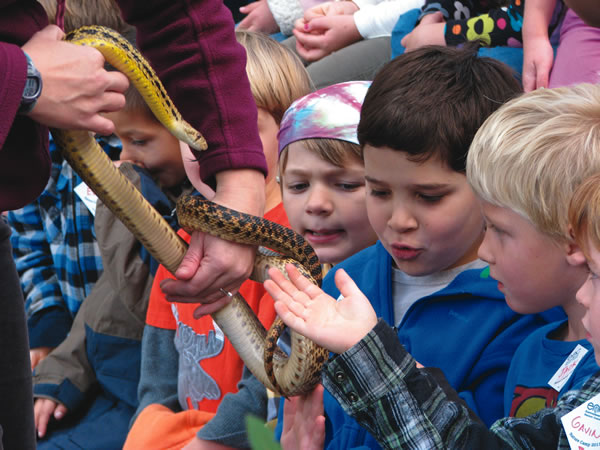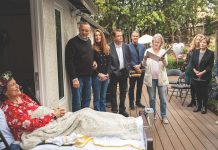The Environmental Nature Center celebrates more than 40 years of teaching and an even brighter future.
By Patrick Mott
Hidden away in a pocket of land adjacent to Newport Harbor High School is a former dumping ground, which today is home to no less than 15 separate plant ecosystems, from desert cactus to giant sequoias. Only blocks from dense residential development and one of the busiest highways in California, it is an oasis of calm, quiet and serenity.
The Newport Beach Environmental Nature Center entered its fourth decade in 2013, and for many schools, teachers and students throughout Orange County, particularly those from the Newport Beach and south county districts, it has become a highly anticipated yearly field trip and an indispensable tool to advance various curricula in the primary grades.
A unique one-stop outdoor classroom, the staff of naturalists and volunteers specializes in educating children about the immense variety of flora and fauna in California—an education the students would otherwise have to travel hundreds of miles to get.
“The center is magical,” says Kelly Siegel, a kindergarten teacher at Woodland Elementary School in Costa Mesa. “My kids walk away with a sense of wonder about the world afterwards. … We’ve been shown animal and plant adaptations, mammals versus nonmammals, living things and nonliving things and butterflies. My own two children have been there and loved it.”
A Favorite Field Trip
Many of the educational programs at the center—designed mostly for grades kindergarten through seventh—adopt a “learning disguised as play” approach. The programs are specifically tailored to supplement required subjects that are taught in each grade. For example, a visiting fourth-grade class that is studying the history of Native Americans in either social science or physical science (ecology) will find those subjects presented in greater depth in a hands-on natural setting.
Activities are widely varied, from opportunities to perform with primitive musical instruments to learning how indigenous Californians fought head colds with eucalyptus leaves. In addition, programs for all grade levels teach students easy conservation and sustainability practices that they can incorporate into their lives.
“We do these programs to help schools satisfy the state requirements for these subjects,” says the center’s executive director, Bo Glover. “The students are encouraged to do all sorts of hands-on activities as they go through the center, and they’re learning concepts that they need to know to go back to their schools and take their tests. We work hand-in-glove with the school curriculum. There’s so much emphasis on standardized testing that the students don’t have the opportunity to get out of their classrooms very often.”
Eva Fast, 9, a fourth-grader from Laguna Beach, enthusiastically describes her visit to the center. “I really liked how we got to see all the plants and got to see the redwood trees and learn how the Gabrielino tribe used them for canoes,” she says. “I really liked learning to make string. There were plants and … one person held two pieces together by the tips and the other two started twisting, and when they were done twisting you ended up making string. It was really cool.”
Today, the center receives about 21,000 students a year on school field trips and “tens of thousands” of visitors of all ages who participate in various organized programs, Bo says. Others simply show up to eat a quiet lunch or take a leisurely stroll through the 2.5 acres of lush greenery.
Humble Beginnings
Four decades ago, however, the majestic greenery that visitors see today was far more humble. Newport Harbor High School had just constructed an Olympic-sized swimming pool, and the soil and materials excavated from the construction site were dumped in a gully adjacent to the campus.
“We’re really a unique facility in that we’re all man-created,” says Bo, who has worked at the center for 20 years. “Our hills, our contours out there, [they] were created from the old dirt from the high school. Luckily the teachers at the time had the vision of creating this outdoor classroom. Classes were established at the high school and they had students come over here and actually create what you see at the facility—15 different plant communities of California, from redwoods to the desert.
“You can imagine what kind of fantastic classroom that is, where you can be in the desert one minute talking about the adaptation of plants and animals and the next minute you’re in a redwood forest,” he continues. “… Our redwood trees here are over 100 feet tall. You’d never know you weren’t in Northern California. And then you’re walking along a stream and a pond and you’re looking at sycamore or alder or cottonwood trees. It’s a fantastic classroom that gives kids who come here a good overall look at what California has to offer.”
While the center’s main focus is on various plant communities, hundreds of species of birds and other animals have also made their homes on the grounds.
“It’s amazing, but it’s like if you build it, they will come,” Bo says. “We’ve seen [more than] 140 different species of birds here. We had a family of bobcats in here a couple of summers ago. There are coyotes. … There are raccoons, possums, skunks, squirrels, lizards and snakes. We do provide this little oasis for the critters who are here.”
Connecting with Nature
Though beautiful, all of the nature at the center can be very strange to many of the city-dwelling kids, Bo explains.
“You might call it nature deficit disorder,” he says. “Being in front of computer screens all the time, and texting and such, they can develop this disconnect with the natural world, and it’s one of our aims to address that, to kind of turn the tables a bit and re-establish that connection with the outdoors. We say we’re not a video game here, we’re the real world.
“I notice the excitement of the children when they first get here. It may be the first tree they’ve seen besides the palm tree in the courtyard of their apartment complex,” Bo continues. “And just seeing that first reaction is probably what has kept me around here for so many years. I can read about things in a book all I want, but [here] I actually have a butterfly land on me or turn over a rock and find a lizard there and maybe try to catch it; those are memories that will last a lifetime.”
To see the layout of the center, with its inviting woodchip-covered trails, canopies of limbs and leaves and little nooks of natural beauty everywhere, it would be easy to imagine a class of elementary school children running riot in the place. Hardly, says Patricia Rabun, a teacher at Top of the World Elementary School in Laguna Beach.
“The children are ready with a little bit of information [from their school classrooms] when they get there,” she explains. “They get split up into groups and the center people take them through these various learning stations. Children get the experience of repeating, so they learn so much. It’s very hands-on, and the kids really get caught up in it. Their behavior is absolutely impeccable because they’re so engaged. And they always want to go back with their parents. All of the teachers agree that it’s one of the best things we do all year.”
A visitor might take a brisk walk through the entire center—from the self-sustaining main building constructed with recycled materials and powered by solar cells and wind turbines, through the entire 15 plant communities and back to the butterfly pavilion (which is open from May through September)—in only a few minutes. But, even with the close encroachment of houses and the high school, the center begs the hiker to slow down and observe.
“You go out in the back and if you don’t focus too hard on the fence, you get the idea that you’re out in a much bigger space,” says Alice Apkarian, a former college chemistry teacher and a center volunteer.
A Preschool Playscape
The back-to-nature philosophy is expected to expand when the center builds what Bo calls “the first nature preschool” on a 1.3-acre plot adjacent to Dover Drive.
“Our vision is that the school will be a nature playscape where kids can kind of get dirty at various play areas,” he says. “Once again, it deals with that nature disconnect, and our goal is to provide the children with the same educational programming of the traditional preschool but using the outdoors as the classroom for the majority of their day, not spending all their time in a four-wall classroom.”
The center closed escrow on the future site of the preschool in December 2012, and continues to raise money for the estimated $5 million construction project through a capital campaign. Once completed—no date is set as of yet—the preschool will focus on outdoor engagement for up to 48 children per year.
Driving by, the center is an easy spot to miss on a daily drive around Newport Beach, but staff members say that one trip almost guarantees future visits, particularly for children.
“Seeing the wonderment in their eyes is, I think, one of the most valuable things for all of us here,” Bo says. “We’re in the middle of Newport Beach, surrounded by houses and lots of stuff and, from the street, you really don’t understand what’s back here—but when people see it they can’t believe it. I don’t think there’s any better feeling for an educator than to see that.”


